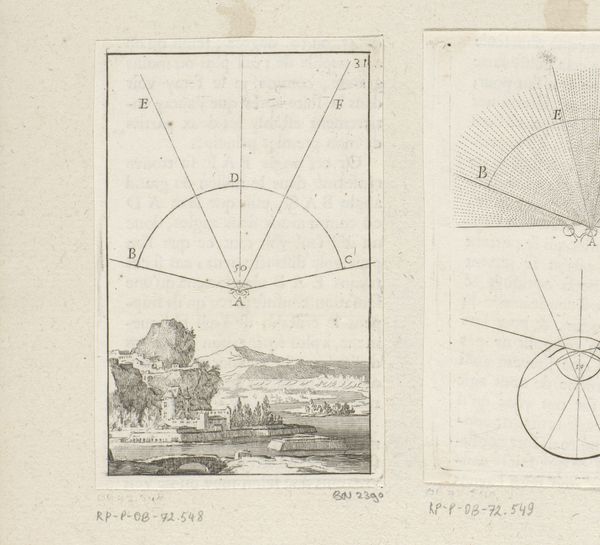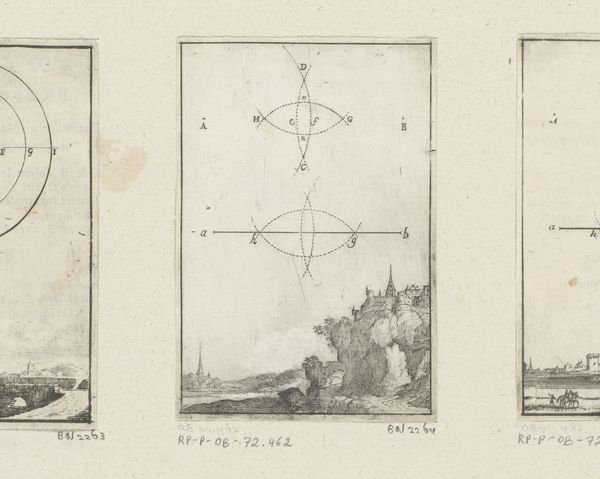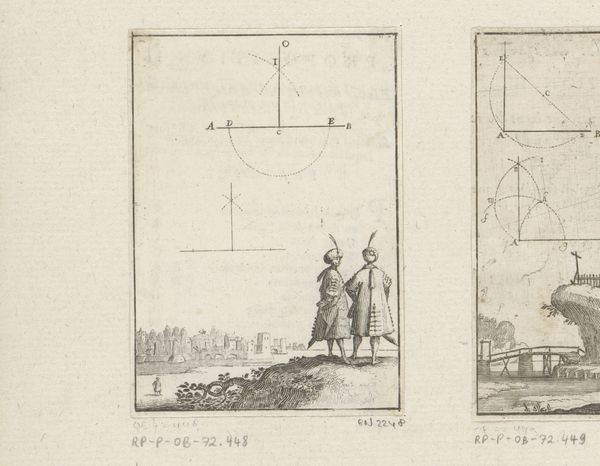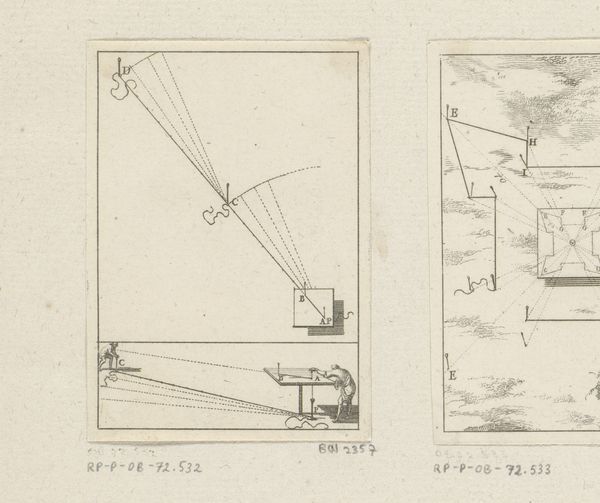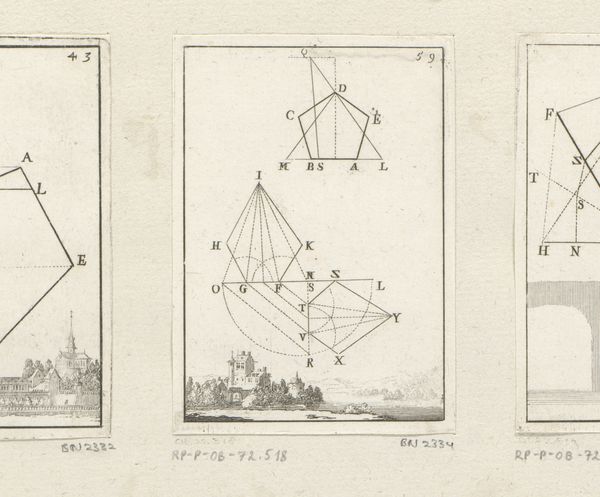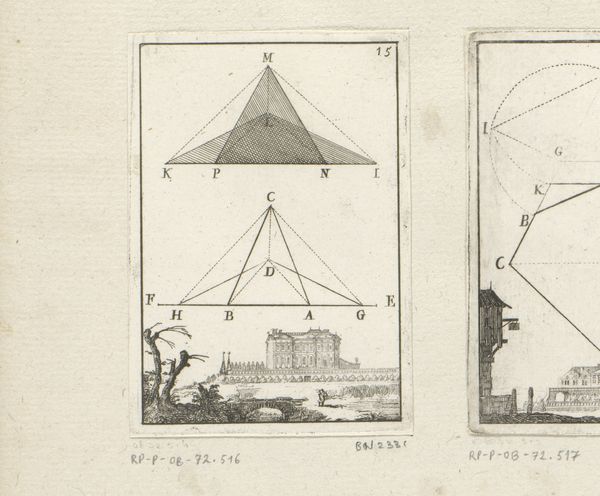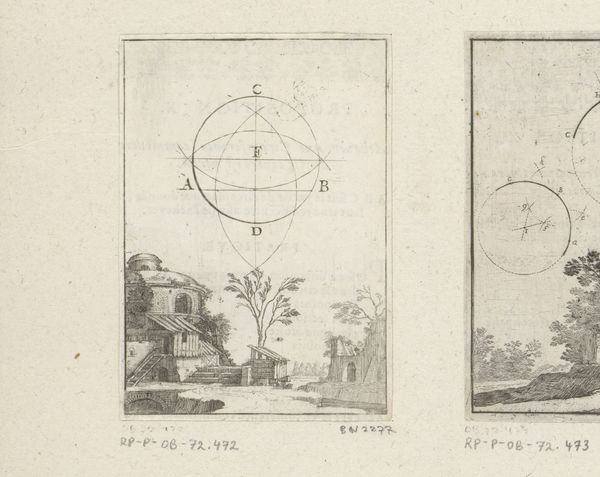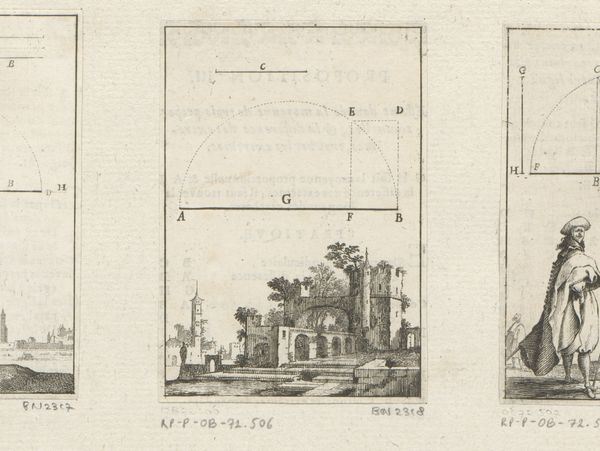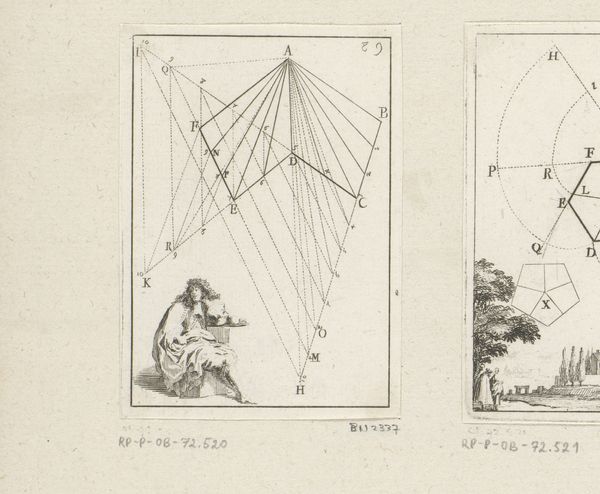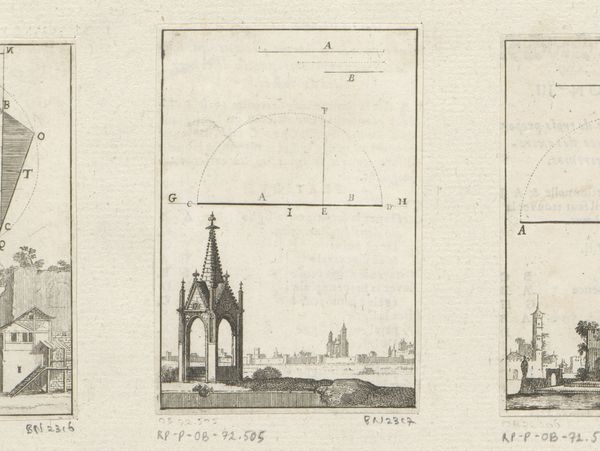
Verdeling van een vijfhoek in vijf gelijke delen met onderaan een gezicht op een stad 1669
0:00
0:00
sebastienleclerci
Rijksmuseum
drawing, print, engraving
#
drawing
#
baroque
# print
#
perspective
#
geometric
#
line
#
cityscape
#
academic-art
#
engraving
Dimensions: height 95 mm, width 67 mm
Copyright: Rijks Museum: Open Domain
Curator: We're looking at an engraving by Sébastien Leclerc I from 1669, titled "Verdeling van een vijfhoek in vijf gelijke delen met onderaan een gezicht op een stad"—which translates to "Division of a pentagon into five equal parts with a view of a city below." Editor: Right, first impression, it’s like a beautifully precise, if slightly confounding, equation dreaming of becoming a city. Or vice-versa. The stark geometry contrasts sharply with that tiny, almost nonchalant cityscape nestled beneath. Curator: Indeed. Leclerc was known for his work on perspective and geometry. This piece perfectly illustrates how mathematical principles were applied in the arts and sciences of the time, particularly in fields like architecture and cartography. Editor: I find it amusing that a seemingly rigid geometric exercise leads our eye down to this, I don't know... carefree, miniature urban sprawl. Is this some commentary on the tensions between structure and freedom, maybe? Curator: It's a question of order versus representation. The precise divisions above aren't arbitrary, of course. They dictate the ways buildings will later come into view – lines of sight, proportion and structure that would enable any kind of coherent urban project. Think about the era: the ambition to organize society and space, using mathematical rules. Editor: So it’s almost a recipe book, then. "Divide precisely, add cityscape." Curator: In a sense, yes! And these kinds of prints were part of the larger scientific culture of the time, reproduced in treatises, and broadly available to those seeking mastery. The print is not so much an aesthetic exercise but also very much about the demonstration of very specific knowledge. Editor: Knowledge as art. Art as… organized pentagons! Looking at it that way shifts the perception quite drastically. I mean, it really brings to light that age-old quest of wanting to discover patterns that define structure underneath visible realities. It also feels somewhat contemporary – with our data visualization or digitally created architectural drafts. Curator: It serves as a great reminder of art’s embeddedness within different kinds of systems. And I agree – its geometric simplicity makes it visually enduring, resonating in various ways across different moments. Editor: I will look at pentagons much differently going forward. Thanks for this.
Comments
No comments
Be the first to comment and join the conversation on the ultimate creative platform.
